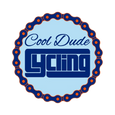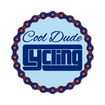Essential Hydration Advice for Cycling Training
Staying hydrated during cycling training is crucial for maintaining performance and overall health. Proper hydration ensures your body can efficiently cool down, transport nutrients, and remove waste products. In this blog post, we'll explore the best practices for staying hydrated on the bike, the types of hydration gear available, and expert advice on what to drink before, during, and after your rides.
Choosing the Right Hydration Gear
When it comes to cycling training, having the right gear can make a significant difference in your hydration strategy. One of the top brands for hydration gear is CamelBak, known for their high-quality bottles and hydration packs. CamelBak offers a range of products suited for different cycling needs, from short rides to multi-day adventures.
For shorter rides, a 710ml (24-ounce) bottle is typically sufficient. It's essential to choose bottles that are easy to drink from and have features that prevent dirt and grime from entering, such as a self-sealing valve or a cap. CamelBak's insulated bottles, like the Podium Chill, are excellent for keeping your drink cold, which can be particularly motivating during hot weather.
For longer rides or more technical terrains where you might not want to take your hands off the handlebars, hydration packs like the CamelBak Chase Vest are incredibly useful. These packs can carry up to 1.5 liters of water and have additional storage for gear, making them perfect for gravel rides or long road trips. They come with a drinking tube, allowing you to hydrate without stopping.
Another innovative option is frame-mounted hydration systems, such as the CamelBak Mule frame pack. These packs can hold up to 2 liters of water and additional gear, fitting seamlessly onto your bike frame. This setup keeps the weight off your back, making it a great choice for bikepacking adventures.
For more information on these hydration solutions, visit CamelBak's official site and explore their range of products tailored for cycling.
Expert Tips on Hydration Strategy
Understanding what to drink and when is as crucial as having the right gear. Andy Blow, founder of Precision Hydration, emphasizes that hydration starts before you even get on the bike. Many athletes arrive at their training sessions already dehydrated, which can severely impact performance. Therefore, ensuring you're adequately hydrated before your ride is essential.
Preloading hydration is a technique where you consume a drink with high electrolyte content, particularly sodium, a few hours before your ride. This method helps to expand blood volume and retain fluids, giving you a head start in hydration. A recommended practice is to drink about 500ml of an electrolyte-rich drink, such as those offered by Precision Hydration, one to two hours before you begin cycling.
During the ride, your hydration needs will vary based on the intensity and duration of the activity. For shorter, less intense rides, plain water or a light electrolyte solution can suffice. However, for longer or more strenuous rides, a mix of water and electrolyte drinks is advisable to replace the fluids and salts lost through sweat. Some cyclists prefer carrying two bottles: one with plain water and the other with an electrolyte drink or a carbohydrate-electrolyte mix for energy and hydration.
It's also crucial to monitor your hydration status. Signs of dehydration include thirst, dark-colored urine, headaches, and lethargy. Weighing yourself before and after a ride can help you understand your sweat rate and adjust your fluid intake accordingly. For more in-depth guidance, consider checking out this resource on how to measure and manage your hydration needs effectively.
If you finish your ride and find yourself significantly dehydrated, resist the urge to gulp down large quantities of plain water. Instead, opt for an electrolyte drink to rehydrate more effectively, as this will help your body absorb and retain fluids better. Aim to consume about 150% of the fluids you've lost during your ride to fully rehydrate.
Conclusion
Hydration is a key component of cycling training that can significantly impact your performance and health. By choosing the right hydration gear, such as those from CamelBak, and following expert advice on preloading and managing your hydration during and after rides, you can ensure you stay adequately hydrated and perform at your best.
Remember, staying hydrated is not just about drinking water but about maintaining the right balance of fluids and electrolytes. By incorporating these tips into your cycling routine, you'll be better equipped to handle long rides and intense training sessions. For more tips on cycling and hydration, visit Cycling Weekly and Bicycling Magazine.











